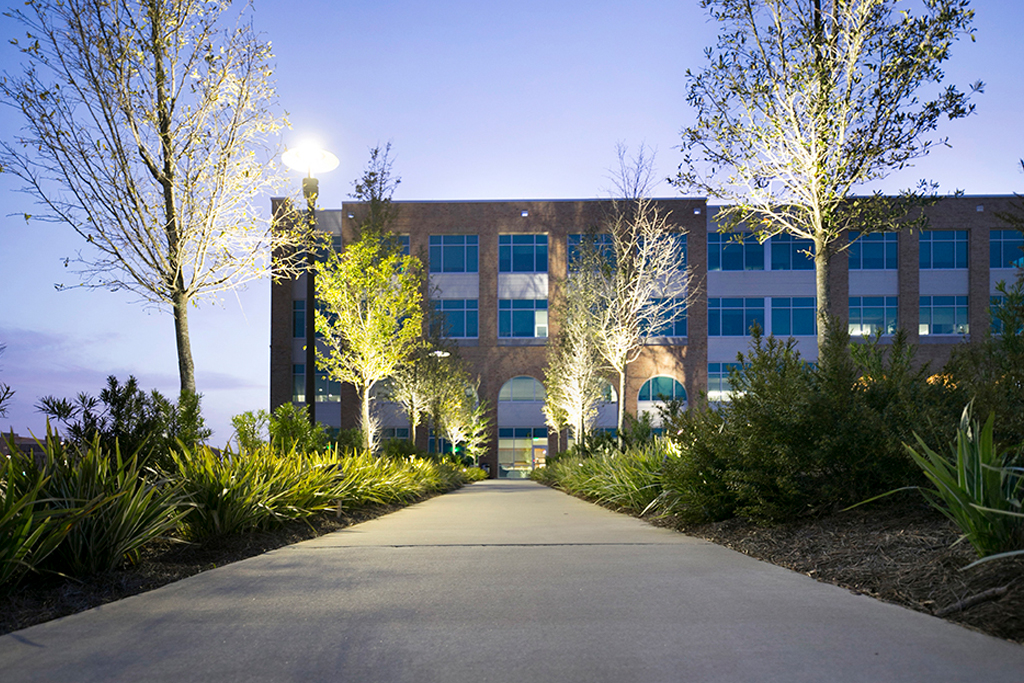We all appreciate the beauty and ambience of healthy landscapes, but how often do you think about what goes into them? Sure, we might marvel at the wonders of nature. Many of us probably even think about the talent and passion a landscape architecture firm poured into its design. But we so rarely consider the maintenance (maybe because we don’t want to be reminded of our own lawn-mowing duties). And you’re probably sighing internally, because few people truly find joy in maintenance. But here’s the thing: If you do your due diligence up front, you can minimize the amount of upkeep your landscape needs. Interested? Then keep reading! We’re talking about how to create healthy low-maintenance landscapes, and we’ve got five tips from the pros!
Landscaping Tip #1: You Have to Commit

This is perhaps the most important thing to know about maintaining healthy landscapes! After you’ve hired your landscape architect and brought a gorgeous vision to life, you need to be prepared to invest the time and/or money it will take to keep it looking like it did the first day.
If you have a property manager who could handle caring for the landscape after it has been designed and executed, make sure they understand how this will increase their workload. If you don’t have a team member like that, consider hiring a landscape maintenance company to do the “dirty work” (pun intended) for you!
Whichever route you choose to take, remember this: There is no such thing as a no-maintenance landscape. There are, of course, design and specification decisions that can increase or decrease the amount of it, but some maintenance will always be a factor.
Tip #2: Consider Landscaping Maintenance When Making Design Choices

Let’s circle back to what we just touched on: how your selections and design concepts can influence maintenance. An experienced landscape architect will be able to give you the full picture of maintenance needed for any specimen you choose, but here are a few things that require greater-than-average upkeep:
- Topiaries have to be frequently pruned to maintain their shape.
- Plants that are known to have trouble surviving in your microclimate will need much more care than other selections would and might even end up being frequently replaced.
- Man-made bodies of water can be a wonderful feature—tranquil, entertaining (especially if you incorporate koi fish), etc.—but don’t make the mistake of believing you can fill them and leave. If you do incorporate wildlife, they will demand care of their own. But even the water feature itself, whether a small pond or fountain, will need care to prevent algae build-up and other problems.
- Annuals offer some of the most eye-catching blooms. In fact, many annual lovers will tell you nothing else gives off such brilliant color. But, there’s a catch! It lies in the name of course. If you don’t want to be replacing that bed of flowers every year, don’t go for the annuals.
Tip #3: Don’t Ignore the Importance of Landscaping Irrigation

For whatever reason, irrigation often gets overlooked by property owners thinking about their low-maintenance landscapes. But when you ensure proper irrigation up front, you help set your plants, grasses, shrubs, trees—the entire ecosystem—up for success. When they all have the hydration they need (and not too much), they thrive.
You’ll want to be sure to hire a landscape architecture firm that has Certified Irrigation Designers on the team. In some cases, contractors will include it in their services, but if they aren’t properly trained, irrigation can go wrong!
Tip #4: Ask Your Landscape Architect Questions

And as an extension of that, don’t assume anything! Why? Because there are so many intricate details and points of knowledge that go into landscape architecture. It is the passion of a creative visionary designing beautiful places, but landscape architects are also well-versed in the biology and behaviors of the living specimens they’re working with.
That expertise means that they can advise you on things like turf. Many people think that turf is best for low-maintenance landscapes. But if you properly design a microclimate-informed ecosystem of a landscape, it can take care of itself and end up looking better for longer than turf will.
Tip #5: Take Microclimate into Account

We’ve touched on this here and there already, but designing a landscape with its microclimate in mind is possibly the best way to properly maintain healthy low-maintenance landscapes. And just what is a microclimate? We like the following definition from Permaculture News:
“Microclimates are spaces in any given landscape where the temperature and climate significantly differ from the immediate surroundings.”
So, for example, let’s say your landscape is a park next to a restaurant. The more open green spaces will attract more sunlight. That will impact how the grass and plants grow there, as well as making it generally warmer. Over in one corner, though, there is a small copse of trees that provide ample shade. That area will be cooler and may provide better growing conditions for certain plants.
A firm grasp on microclimates helps you achieve all of your goals for your landscape. It ensures that you won’t be fighting maintenance challenges (like plants that love sun being stuck in the shade).
There you have it! We hope these five tips help you to know how to properly maintain healthy landscapes, and if you’re wanting to learn more about the topic, keep an eye on our blog or reach out to us!
We here at Jerry Pate Design love to talk about the landscapes we create! Let us show you how we set them up for long-term success.

